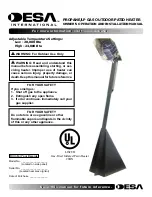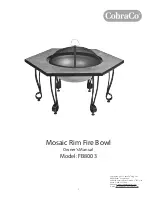
6. Put the radiator back in an upright position and check the level of the liquid inside it.
7. Make sure that the connection between the radiator and the heating element is tight.
8. Install the controller – fit the indents on the head (A) with the indents in the
controller (B).
9. Position the controller casing in a way providing an easy and comfortable access.
WARNING!
If you feel resistance when twisting the controller it means that you have
reached the maximum twisting span in that direction. Try to twist the controller in the
opposite direction. Any damage to the device will result in annulment of the warranty.
10. Secure the casing at the back with Allen key.
11. Connect the device to electricity and turn on the heating element unit (upper col-
lector opening must be open!). One can use a hot heating agent of temperature not
exceeding 65°C. In such case, fill the entire radiator, put it in an upright position and
turn the heating element unit on!!
12. Set the maximum possible temperature required and observe the liquid level rise –
the excess liquid may be slopping through the upper opening – remove excess liquid
in order not to allow for the controller to be flooded or wetted.
13. When the level of the heating agent stops rising, wait another 5 minutes, turn off the
heating element unit and disconnect the device from electricity.
14. Do not wait until the radiator cools down and pour a small amount of the liquid out –
to the mid level of the top pipe.
15. Close the upper opening of the collector with a dedicated seal and put it back
on the wall.
16. Connect the heating element unit to the socket/installation. The device is ready to
work.
DUAL FUEL RADIATOR:
1. Radiator connected to the central heating system to which heating element unit
is installed additionally.
2. Central heating installation must be fitted with the valves enabling disconnecting the
radiator from the rest of the system.
3. Temperature of the heating agent from the central heating system inside the radiator
must not exceed 82°C!
4. It is recommended to bleed the radiator after every longer interval in use. The device
has a thermal fuse built in which protects the radiator from operating in dry condi-
tions. Activation of thermal fuse means that the heating element unit will have to be
returned to the Producer for servicing (not covered by warranty).
5. Heating element must not be installed horizontally or turned downwards.
Tools required for installation of heating element unit.
– Allen key 1.5 (included)
– spanner no 24









































